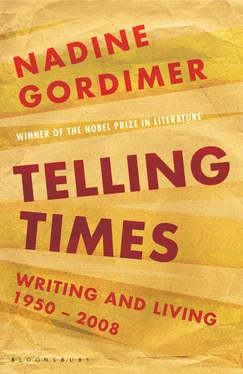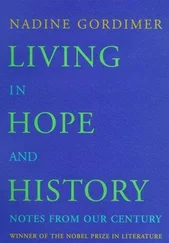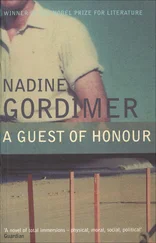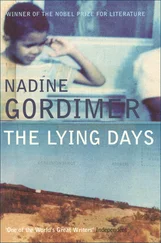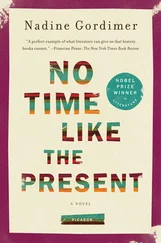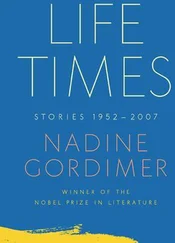Sammy, Sammy, what you got?
Missus, Missus, apricot.
There were many more verses with the same rhyme scheme, becoming more and more daring in their inclusion of what struck the children as giggle-producing obscenities, such as ‘chamber pot’, and a few genuine old Anglo-Saxon shockers, which they pronounced quite calmly.
If you did not serenade the Indian with rude songs, and your mother was a good buyer and payer, he might hand you down a peach or a bunch of grapes from his lorry, but if you were an urchin without family backing, he would shout and shoo you away, lest your quick hand filch something while his back was turned. It is interesting to me now, too, to remember how yet again the bogy of uncleanliness came up immediately with the gift of the peach from Sammy; my mother, too polite to offend him by saying anything, pronounced such a warning with her eyes that I would not dare put my teeth to that peach until I had taken it inside to be washed. Sammy had ‘handled’ it. Sammy was an Indian. In fact, Sammy was Not White. Heaven knows, I don’t suppose the man was clean. But why did no one ever explain that the colour had nothing to do with cleanliness?
So my sister and I began by thinking of the Indian as dirty, and a pest; the vendors whom I have described as annoying us on the beach at Durban were the prototype. Then we thought of him as romantic; our wanderings in the Indian market in Durban were, I suppose, part of a common youthful longing for the exotic. And finally, when we were old enough and clearheaded enough and had read enough to have an abstract, objective notion of man, as well as a lot of jumbled personal emotions about him, the Indian became a person like ourselves.
I suppose it is a pity that as children we did not know what people like to talk of as ‘the real Africa’ — the Africa of proud black warriors and great jungle rivers and enormous silent nights, that anachronism of a country belonging to its own birds and beasts and savages which rouses such nostalgia in the citified, neighbour-jostled heart, and out of which a mystique has been created by writers and film directors. The fact of the matter is that this noble paradise of ‘the real Africa’ is, as far as the Union of South Africa is concerned, an anachronism. Bits of it continue to exist; if you live in Johannesburg, you can still go to the bushveld for solitude or shooting in a few hours. And bits of it have been carefully preserved, with as little of the taint of civilisation as is commensurate with the longing of the civilised for comfort, as in the Kruger Park. But the real South Africa was then, and is now, to be found in Johannesburg and in the brash, thriving towns of the Witwatersrand. Everything that is happening on the whole emergent continent can be found in microcosm here. Here are the Africans, in all the stages of an industrial and social revolution — the half-naked man fresh from the kraal, clutching his blanket as he stares gazelle-eyed at the traffic; the detribalised worker, living in a limbo between his discarded tribal mores and the mores of the white man’s world; the unhappy black intellectual with no outlet for his talents. And here, too, are the whites, in all the stages of understanding and misunderstanding of this inevitable historical process — some afraid and resentful, some pretending it is not happening, a few trying to help it along less painfully. A sad, confusing part of the world to grow up and live in. And yet exciting.
1954
We have a friend in Cairo who is a prefabricator of mosques. I do not offer this as an item from Ripley, or as an insinuation that our friend belongs under any exhibitionist heading of Unusual Occupations, along with sword-swallowers and bearded ladies. On the contrary. He is a thin, wiry aesthete of great charm, member of a famous continental banking family by birth, Arab by inclination, and the beauty of his profession (for me, at any rate) is that there is nothing intrinsically outlandish or freakish about it; it is simply a combination of two perfectly ordinary occupations which happen to belong, in time and space, worlds apart. Mosques have been going up in the East since the seventh century, the technique of prefabrication can safely be dated round about the second world war of this century. All that Wally (which is not his name) has done is combine East with West, past with present. He has managed a synthesis which is also a compromise with the world in which he finds himself; and that, any psychiatrist will tell you, is about the best any of us can hope to do.
Wally is rather good at this sort of thing, it seems. He is all incompatibles. His blood is that much-punished mixture, half German Jew, half German Gentile. Within himself, there are no frontier incidents between the Jewish blood of his mother, and his affinity with Islam. He is a Jew who loves Arabs, a high-born Gentile German who is half Jew.
My husband lived with him for four years during the war, but I had not met him until we visited Cairo in the spring of last year. We met for the first time at lunch, in his Cairo flat. He looked like Humphrey Bogart (how he will smile that jutting-toothed smile when he reads this, because although he is a prefabricator, he is not so wholly of the twentieth century that he regards film stars as prototypes) and he loped stiffly from the little mezzanine bedroom down to the living room, from the living room to the kitchen and back, bringing us the small treasures he has to show — pieces of woven Coptic cloth, an ancient ring from a tomb, a tiny stone Anubis, the sacred dog of ancient Egypt.
After lunch he slipped away, with my husband, and it was not until they returned that the rest of us, myself and Wally’s wife and the other guests, noticed that they had been absent. When his wife asked where he had dragged my husband off to before they’d even had their coffee, he answered vaguely, something about ‘showing him round’. But Wally was to drive us back to our hotel at four o’clock, and the door of the flat had scarcely closed behind us when he smiled that smile at me and whispered, ‘Now I’ll show you something.’ Squeezed into his 1928 two-seater. Dodge convertible, we retraced the small journey he had made earlier, alone with my husband, through the suburb of Bab al-Louq, to a wide street of what once had been handsome Arab houses. The car clattered to a standstill before a house that was being demolished. Two moustached Arabs wearing woollen caps grinned at us from the scaffolding like pirates from a mast. They were taking down the pinkish stone façade of the house, block by block. As each segment was freed, they hoicked it on to a donkey eart that stood by. Wally peered upwards beneath the tattered hood of his car, rapt, his tongue making a little click expressive of shrewdness. ‘What d’you think of it, Nadine?’ he murmured, in the tone of a man offering a privilege.
‘What, the house?’
‘My façade,’ said Wally.
‘He’s bought it,’ said my husband, proudly.
I looked from one to the other.
‘Really,’ said my husband.
‘But what on earth for?’ I asked, ‘What’s he going to do with it?’
It was then that Wally told me about what he called his prefabricated mosques.
Wally has a reverent love for old Cairo. He has lived there, precariously, stateless, without papers or passport, since he landed at Port Said in a yacht twenty-five years ago. He was an adventurous boy, mad about sailing, and the despair of his parents in Hamburg. This was a pleasure cruise from which he never returned to Europe, for while he was away, Hitler’s persecution partly destroyed and entirely scattered his family. He lost his birthright of money, possessions and European culture.
Wally has lived in Cairo twenty-five years in this life, does not belong to Egypt, yet perhaps once lived there before. When you catch a glimpse of him, turning down one of the cluttered Cairo streets on some mysterious errand of his own, looking up out of his deep preoccupation to shout suddenly, as Arabs do, at someone who has run across his path, you see something that cannot be only twenty-five years old. He may have been out of Cairo for a century or two, but he was there before and now he is back. He not only sees but feels in his bones that Cairo is one of the most marvellous cities in the world, and that it is crumbling away before him. He looks mutely at the shoddy white sugar-cube blocks going up where the palaces were left to become rubble beneath the feet of men and the hooves of goats; he catches his breath at the sight of a beautiful keyhole doorway, still standing, a little house with a cool courtyard, that might yet be saved. He wants to buy them all. Driving with him through the lanes of the old town, I saw that his black eyes were not on the yelling dawdling traffic — there was no hooter in his car, and, dangling one hand out of the window, he beat on the bodywork to give warning of his approach — but looked all the time at windows, doors, balconies and gateways, mosques fallen away like cliffs, houses like broken honeycomb. He wants to buy them all, to save what can never be built again. He is not appalled by dirt, by poverty, by the degeneration of the humans who shelter and breed in pace with this decay. That is Allah’s affair. He wants only to hold together a little longer the beauty that has held out so long.
Читать дальше
